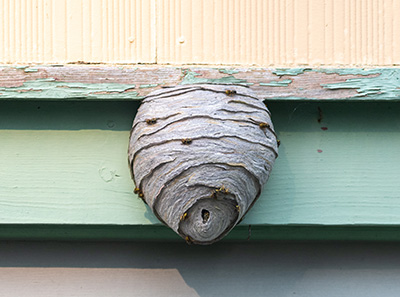
Beehives, along with wasp and hornet nests, are a common sight in nature and usually don’t pose a threat. However, the need for removal arises when these structures are found close to human dwellings and places of business. Given the potential aggressiveness of these insects, it’s wise to seek professional assistance for wasp problems as soon as they’re spotted.
At Inman-Murphy, Inc., ensuring the safety of your household from these stinging pests is our priority. We offer wasp nest removal solutions that are both efficient and secure
When is it Time for Hornet Nest Removal?
Finding a wasp or hornet nest is a clear indication to maintain distance, as seemingly empty nests may still be inhabited by potentially aggressive insects. The risk of an encounter grows if the nest is in a busy area, with insects more likely to defend their territory. The threat level increases further from late summer to fall, as the insect population starts to wane. Successful nest removal hinges on timely action, informed by an understanding of wasp seasonal patterns.
Need Bee, Wasp, or Hornet Control?
We'll call you! Leave your information below.
Is DIY Wasp Nest Removal Safe?
Undertaking the removal of a wasp nest independently is ill-advised. Given the potential for nests to house a greater number of insects than anticipated, the risk of danger is high. For nests larger than a fist, seeking professional assistance is the safest option. If you decide to get rid of the nests by spraying pesticides, learn the necessary precautions such as appropriate attire and safety basics.
Our Wasp Nest Removal Services
In the Mid-South TN region, it’s common to find bees, wasps, and hornets, but their nests can become hazards when located near living or working spaces. Upon engaging Inman-Murphy, Inc. for nest removal, we conduct a comprehensive inspection to ascertain the type of stinging insect and the location of their nest. We then proceed with the removal service either immediately or at a more opportune moment, ensuring safety. Reach out to us to explore more about our services in bee and wasp nest removal!
